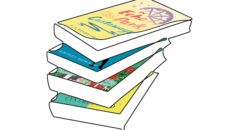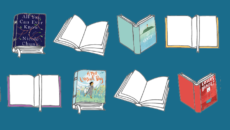As an adoptive mother and an educator, I feel that it is our responsibility to teach our children the social skills and strategies they’ll use in their everyday lives. Ongoing communication is the key, and with difficult subjects, like bullying, children’s literature can be particularly helpful in opening up conversation. These books about bullying, and follow-up talks, will ultimately allow our children to think, analyze, and decide how to respond or act in any given situation.
Stop Picking on Me: A First Look at Bullying by Pat Thomas
This wonderful picture book introduces the concept of bullies, illustrates the fact that they come in all shapes and sizes, and, most importantly, reassures the reader that nobody ever deserves to be bullied.
Open-ended questions sprinkled throughout offer opportunities for discussion. “Have you ever been bullied?” asks one, and “Can you think of any different ways to deal with a bully?” prompts another. It was eye-opening to see my 5-year-old daughter nodding in recognition of these situations at school and at camp, and it paved the way to discuss strategies for dealing with them.
My Secret Bully by Trudy Ludwig
This book portrays relational aggression—emotional bullying under the guise of friendship, which is particularly common in groups of girls. As the story unfolds, you see the tactics Katie uses to manipulate her best friend, Monica. Finally, after role-playing and discussion with her supportive mom, Monica confronts Katie and reclaims her sense of self. My 10-year-old daughter could identify with the situations that Monica faced, and the book led us to role-play possible responses to each scenario.
In the back of the book, the author provides questions for further discussion and a list of organizations and Web sites for more information on emotional bullying.
Shredderman: Secret Identity by Wendelin Van Draanen
Fifth-grader Nolan Byrd is a math and computer whiz, but he’s constantly picked on by hulking Alvin Bixby, aka Bubba. Bubba is the kind of bully that the teacher, and even the principal of the school, does not try to stop. Tired of being tormented, Nolan develops an alter-ego, Shredderman, and shows everyone at school what Bubba’s really like.
When I read this book in class, my third-graders were riveted. Not only did everyone enjoy the story, it led into some great discussions of bullies, bystanders, and allies.
The Bully, the Bullied, and the Bystander by Barbara Coloroso
This clearly written book analyzes the roles of all persons in a bullying interaction and gives parents and teachers some food for thought. For example, Coloroso shows how different parenting styles can influence the roles our children take in social interactions. She also describes methods that adults can use to counter bullying.
From my experiences, I’ve seen how adoption and, often, ethnicity or culture, can add complexity to a child’s life. And in the cycle of bullying, it is our differences that are targeted. But we can equip our children with the strategies that will allow targets to stand up to bullies and to prompt bystanders to become allies. By teaching our children that each of us can make a difference, we can change the belief that bullying is an inevitable rite of passage.



